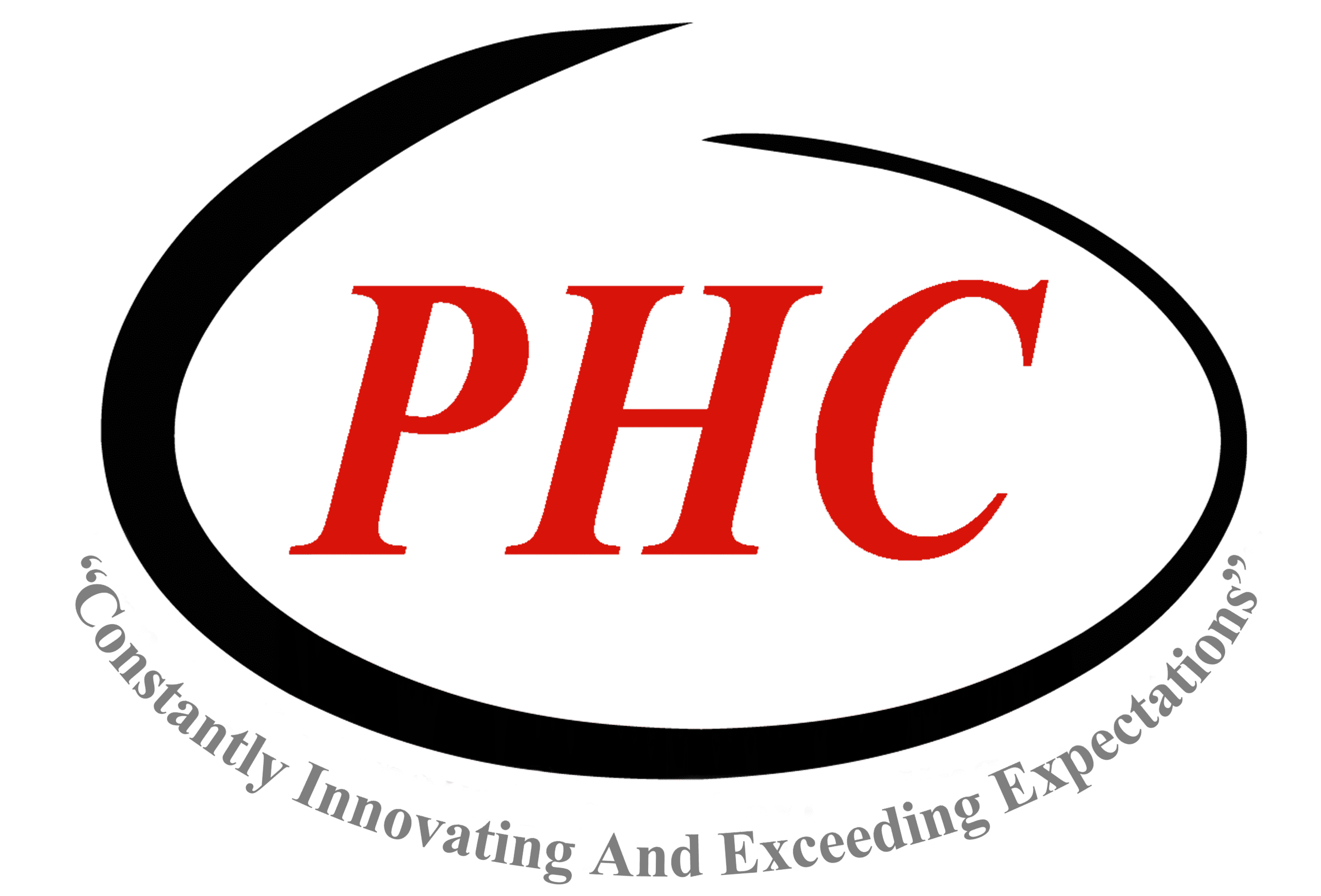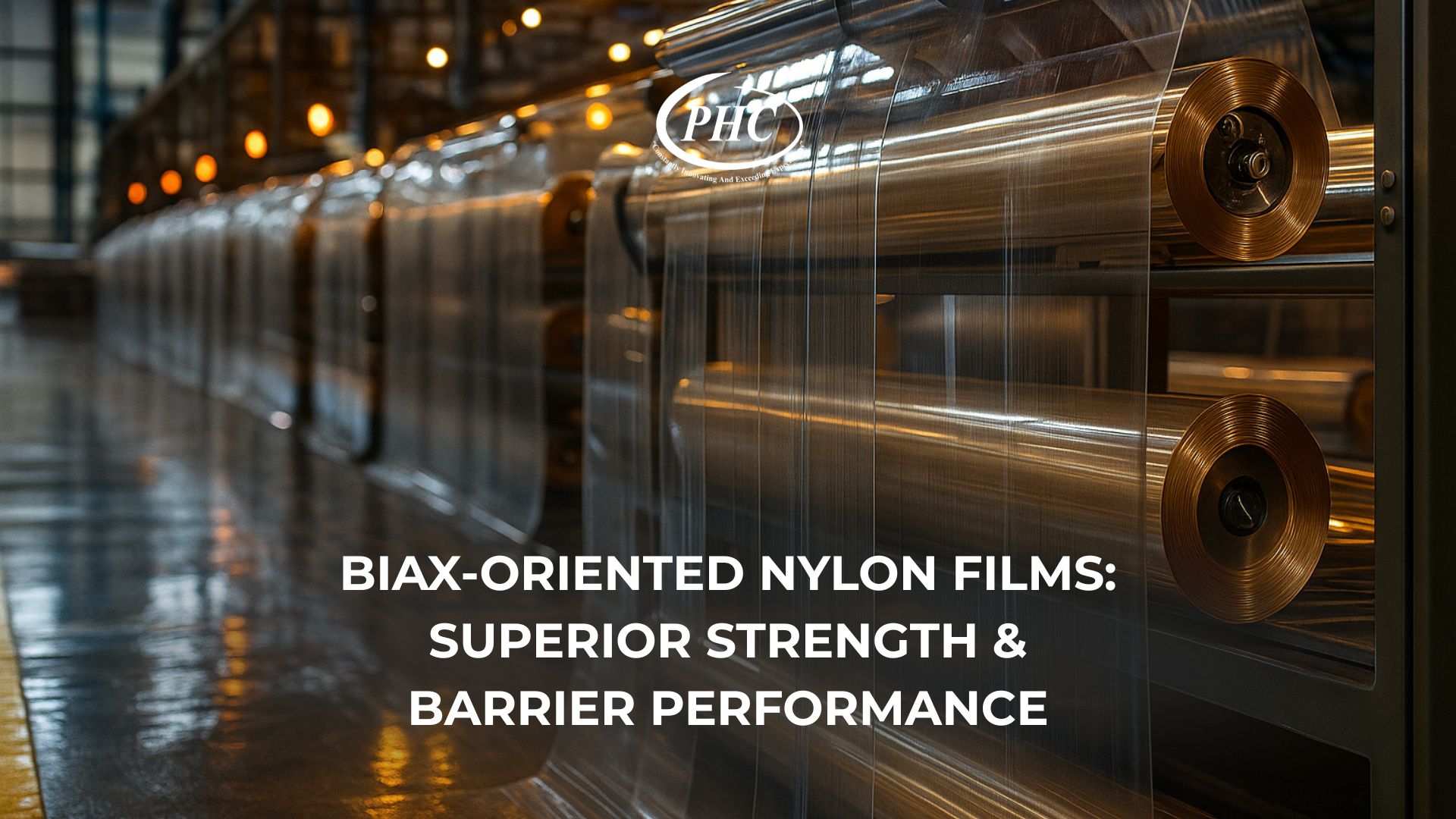In the rapidly evolving world of flexible packaging and industrial films, few materials command as much respect as biaxially oriented nylon (BON) films. Known for their superior tensile strength, puncture resistance, and outstanding gas barrier properties, these films have become essential components across food packaging, electronics, labeling, and industrial manufacturing.
At Pilcher Hamilton Company (PHC) — located at 850 South Buncombe Road, Greer, South Carolina — we’re proud to offer BON films as part of our expanding portfolio of high-performance materials. Whether you’re searching for nylon barrier film, high-strength packaging, or simply exploring “polyester near me” for complementary laminates, PHC delivers engineered solutions designed to meet modern performance standards and sustainability goals.
In this in-depth article, we’ll uncover what makes biaxially oriented nylon films unique, explore their remarkable benefits, and discuss how they’re reshaping industries from flexible packaging to electronics manufacturing — all while highlighting how PHC stands as your trusted local supplier and converter for BON and other specialty films.
What Makes Biax-Oriented Nylon Unique?
To understand the value of biaxially oriented nylon (BON), it helps to start with the term itself. “Biaxially oriented” refers to a manufacturing process in which nylon film is stretched in both the machine direction (MD) and transverse direction (TD). This controlled stretching aligns the polymer chains in two directions, creating a film that’s stronger, clearer, and more stable than conventional cast nylon.
1. The Orientation Process
The production of BON films begins with extrusion, where molten nylon resin (typically Nylon-6 or Nylon-66) is cast into a thin sheet. That sheet is then heated and stretched in two perpendicular directions using a sequential or simultaneous orientation process.
- Machine Direction (MD): The film is stretched lengthwise, increasing tensile strength and reducing thickness.
- Transverse Direction (TD): It is then stretched crosswise to enhance dimensional stability and impact resistance.
After stretching, the film is heat-set to lock in molecular orientation, minimizing shrinkage and enhancing temperature performance.
2. Structure and Clarity
This biaxial stretching produces a highly ordered molecular structure. The result is a transparent, glossy film with remarkable optical properties, mechanical toughness, and resistance to puncture or tearing — qualities that make BON ideal for protective packaging and industrial laminates.
3. Complementary to Polyester Trends
While polyester (PET) dominates many film markets, BON complements PET in barrier laminations. Where PET provides stiffness and clarity, BON contributes toughness, flex-crack resistance, and oxygen barrier protection. Together, they form multi-layer laminates that balance strength, flexibility, and preservation — a trend driving modern packaging innovation.
At PHC, BON films are available both as stand-alone substrates and as lamination partners for polyester, extending the value of our full film portfolio.
Key Benefits: Tensile Strength, Puncture Resistance & Barrier Properties
The secret to BON’s performance lies in its molecular alignment and crystalline structure, which endow it with several key advantages over standard nylon and other packaging materials.
1. Superior Tensile Strength
Thanks to biaxial orientation, BON exhibits exceptional tensile strength — often two to three times higher than uniaxially oriented or cast nylon films. This strength allows for thinner gauges without sacrificing durability, supporting material efficiency and sustainability initiatives.
In high-speed packaging or industrial lamination, BON maintains structural integrity under stress, reducing film breaks and downtime.
2. Excellent Puncture and Tear Resistance
When it comes to sharp or irregularly shaped contents, BON stands out. Its impact and puncture resistance make it ideal for packaging meats, nuts, frozen foods, or hardware items. Even at low temperatures, BON retains flexibility, preventing brittleness during freezing or transit.
This performance also extends to automotive and electronic uses, where mechanical stability prevents tearing during lamination, forming, or assembly.
3. Outstanding Barrier Properties
BON films provide excellent oxygen and aroma barrier performance, helping preserve product freshness and extend shelf life. While not as moisture-resistant as some coated PET or PVDC films, BON excels at preventing oxygen ingress and odor transmission.
For maximum barrier protection, BON is often laminated with polyester (PET), polyethylene (PE), or EVOH) layers — a combination that enhances both mechanical and environmental resistance.
4. Dimensional Stability and Heat Resistance
Unlike many flexible plastics, BON retains its shape under heat. With a typical melting point above 200°C, it’s well suited for retort packaging, sterilization processes, and high-temperature laminations. It also shows low thermal shrinkage, which ensures dimensional precision during heat sealing or printing.
5. Chemical and Abrasion Resistance
Nylon’s inherent chemical resistance makes BON films suitable for contact with oils, greases, and certain solvents. The film’s tough surface also resists abrasion and scuffing, protecting both printed graphics and packaged goods.
6. Optical Clarity and Printability
BON offers high gloss and clarity, comparable to PET, which is essential for visual packaging and labeling applications. Its smooth surface supports corona or chemically treated finishes for excellent ink adhesion during flexographic or gravure printing — services available directly from Pilcher Hamilton when printing on polyester or BON-based laminations.
7. Sustainability and Thin-Gauge Efficiency
BON’s superior mechanical strength means thinner gauges can be used to achieve the same performance, reducing material use and environmental impact. When combined with recyclable or PCR (post-consumer recycled) layers, BON supports circular packaging initiatives gaining traction across the packaging and electronics sectors.
Applications in Flexible Packaging, Labels & Electronics
Because BON blends strength, clarity, and barrier performance, it’s found in an exceptionally wide range of industrial and consumer applications. Below are the key sectors that rely on biaxially oriented nylon films.
1. Flexible Food Packaging
BON’s primary use is in high-barrier flexible packaging for perishable or delicate goods. Typical applications include:
- Vacuum pouches for meats, cheeses, and seafood
- Boil-in-bag and retort pouches
- Snack and dry food laminations
- Frozen food wraps
- Pet food packaging
In multilayer constructions, BON often serves as the middle or outer layer, combined with PET, PE, or aluminum foil to balance sealability, stiffness, and barrier performance. Its clarity allows for transparent windows in premium food packaging, letting consumers see the product inside.
2. Labels and Industrial Graphics
BON’s smooth surface and durability make it suitable for industrial label stock, graphics, and tags. Its tensile strength ensures that labels resist tearing during application, while its dimensional stability maintains print registration in high-speed printing.
When used as a lamination film with polyester, BON enhances tear resistance and formability, supporting complex die-cut shapes or contoured label applications.
3. Barrier Laminations and Protective Layers
BON’s oxygen barrier properties make it invaluable in multi-layer laminates designed for chemical resistance, light blocking, or aroma control. It acts as a functional core layer, improving both performance and shelf life.
PHC’s customers use BON in conjunction with:
- PVDC-coated PET films for enhanced barrier systems
- Acrylic-coated polyester for printability and gloss
- Heat-sealable PET or PE layers for closure compatibility
The synergy between BON and polyester exemplifies how PHC helps clients engineer custom multilayer films with precise mechanical and barrier properties.
4. Industrial and Technical Uses
Beyond packaging, BON is valued in industrial and technical applications requiring high mechanical strength, dimensional stability, and dielectric properties:
- Electrical insulation films
- Photovoltaic module back-sheets
- Flexible printed circuits (FPCs)
- Industrial release liners
- Protective laminates for optical devices
Its excellent dielectric strength and thermal stability make BON a reliable choice for electronics and solar energy manufacturing.
5. Medical and Pharmaceutical Packaging
BON’s clarity, puncture resistance, and barrier protection make it ideal for medical pouches, sterile barrier laminates, and pharmaceutical sachets. The film can endure autoclave sterilization while maintaining seal integrity and transparency.
PHC: Your Local Source for BON Films in Greer SC
When sourcing biaxially oriented nylon films, quality, customization, and local accessibility matter. That’s where Pilcher Hamilton Company (PHC) sets the standard.
From our facility at 850 South Buncombe Road, Greer, South Carolina, PHC provides BON films, polyester films, and custom laminates to customers across the Southeastern United States and beyond.
We understand that today’s industries require not only reliable materials but also speed, flexibility, and technical partnership.
1. Full-Service Film Converting
PHC offers an integrated range of converting services, including:
- Precision slitting and rewinding
- Custom coating (adhesive, silicone, acrylic, or barrier)
- Die-cutting and sheeting
- Printing and laminating
These capabilities allow us to deliver ready-to-use rolls or customized formats that integrate seamlessly into your production process. Learn more about our Toll Converting services to see how we can process your materials with precision.
2. Local Stock and Rapid Turnaround
Searching for “polyester near me” or BON films available now?
Our Greer, SC warehouse maintains a wide inventory of biaxially oriented nylon, PET, and specialty coated films for quick dispatch. Local stocking reduces lead times, shipping costs, and carbon footprint — ensuring you get the materials you need, when you need them.
3. Technical Expertise and Collaboration
Our team of film specialists collaborates with engineers, designers, and packaging developers to match film properties to performance goals. Whether you need BON for vacuum packaging, printed laminations, or high-temperature insulation, PHC helps tailor film combinations for optimum efficiency and cost.
4. Complementary Materials
BON is part of PHC’s extensive film lineup, which includes:
- General-Purpose Industrial Films
- PET and BOPET films (clear, metallized, heat-sealable, or coated)
- PVDC-coated and acrylic-coated polyester
- PCR (post-consumer recycled) PET options
By combining these materials, PHC develops integrated film solutions for packaging, labeling, and industrial manufacturing.
5. Sustainable Solutions
Sustainability drives our R&D. PHC promotes thinner gauge BON, energy-efficient coating lines, and recyclable laminate designs that meet evolving environmental standards without sacrificing performance.
As consumer demand shifts toward eco-friendly packaging, our technical team works with clients to optimize BON-based laminates for recyclability and resource efficiency.
6. Proven Local Legacy
Since 1904, Pilcher Hamilton has operated as one of America’s most respected film suppliers and converters, serving markets across packaging, printing, electronics, and industrial applications. Our reputation is built on technical precision, reliable delivery, and local service — values that continue to guide our mission today.
Learn more about our Locations and how PHC supports customers across the U.S. and internationally.
BON Films and the Future of Flexible Packaging
As brands and converters continue to seek lighter, stronger, and more sustainable packaging materials, biaxially oriented nylon films are poised for even greater relevance.
Key trends include:
- Hybrid laminations: Combining BON with polyester or polypropylene for optimal mechanical and barrier performance.
- Sustainability upgrades: Developing BON films compatible with recycling streams and post-consumer recycled resins.
- Smart packaging: Using BON as a substrate for printed electronics and sensor-enabled laminates.
- High-barrier medical and pharmaceutical applications: Expanding BON’s role in sterile packaging and drug delivery systems.
In each of these areas, PHC’s integrated approach — from film sourcing to custom converting — empowers manufacturers to stay ahead of evolving performance and regulatory demands.
Strength, Clarity & Performance — Locally Delivered
Biaxially oriented nylon films represent the perfect balance between strength, flexibility, and barrier protection — essential attributes for modern packaging and industrial innovation. Their ability to withstand mechanical stress, maintain clarity, and protect contents makes them indispensable across markets from food and pharma to electronics and renewable energy.
At Pilcher Hamilton Company, we combine the science of advanced materials with the service of a local partner. From BON films to PET laminates, from slitting and coating to printing and toll converting, PHC provides the expertise and responsiveness that modern supply chains demand.
Whether you’re designing high-barrier packaging, labeling durable industrial products, or sourcing nylon films for technical use, PHC stands ready to support your goals — right here in Greer, South Carolina.
📍 Visit Us:
Pilcher Hamilton Company
850 South Buncombe Road
Greer, SC 29650
Contact Us

